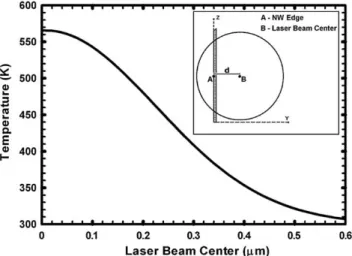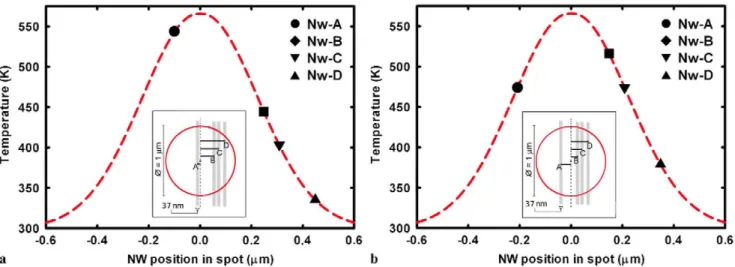Study of the temperature distribution in Si nanowires under microscopic laser beam excitation
Texto completo
Figure
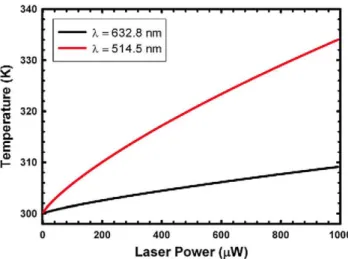
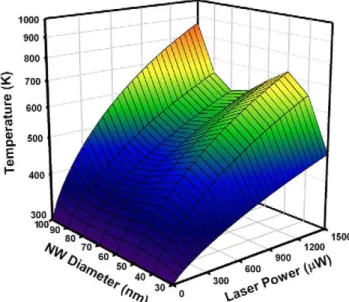
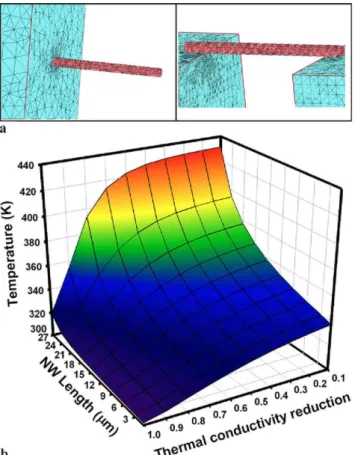
Documento similar
We report on Ytterbium and Neodymium codoped LaF 3 core/shell nanoparticles capable of simultaneous heating and thermal sensing under single beam infrared laser excitation..
MD simulations in this and previous work has allowed us to propose a relation between the nature of the interactions at the interface and the observed properties of nanofluids:
Lo que se conocía entonces como Plaza Nueva, no era sino el resultado de uno de los primeros logros en la cubrición del Darro, es decir, surgió gracias a que se ganó al río todo
In the “big picture” perspective of the recent years that we have described in Brazil, Spain, Portugal and Puerto Rico there are some similarities and important differences,
Electron density and excitation temperature in the laser-induced plasma were estimated from the analysis of spectral data at various delay times from the CO 2 laser pulse
In the previous sections we have shown how astronomical alignments and solar hierophanies – with a common interest in the solstices − were substantiated in the
Díaz Soto has raised the point about banning religious garb in the ―public space.‖ He states, ―for example, in most Spanish public Universities, there is a Catholic chapel
The tentative spin and parity assignment to the observed levels in 44 S is based on the comparison between the calcu- lated and experimental (i) excitation energies, (ii)
